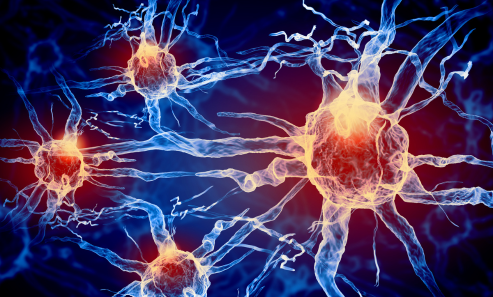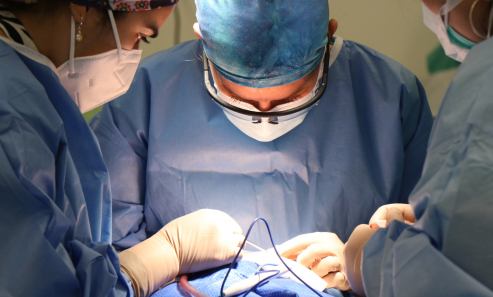




An aneurysm is an abnormal bulge or ballooning in the wall of a blood vessel. It occurs when the vessel wall weakens, causing it to expand under pressure. If left untreated, an aneurysm can rupture, leading to life-threatening internal bleeding or stroke.

Performed to reconnect severed or damaged nerves.
Involves precise stitching of the nerve ends.

Used when nerve gaps are too large for direct repair.
A healthy nerve segment (graft) is taken from another part of the body and implanted into the damaged area.

Involves removing pressure from a compressed or pinched nerve.
Commonly used for conditions like carpal tunnel syndrome or ulnar nerve entrapment.

Healthy nerves from other parts of the body are connected to the damaged nerve to restore function.
Used for brachial plexus injuries or severe nerve damage.

The removal of scar tissue or adhesions surrounding the nerve.
Helps in cases where nerve function is compromised by scarring.

Excision of benign or malignant tumors pressing on or growing along peripheral nerves.
Helps restore nerve function and relieve pain.

Implantation of electrical stimulators (spinal cord or peripheral nerve stimulators) to manage chronic nerve pain.
Symptoms vary depending on the location and severity of the nerve damage, including:
in the affected area.
(tingling, burning, or numbness).
(difficulty moving or coordinating).
or coordination issues.
Although generally safe, peripheral nerve surgery carries some risks, including:

Peripheral nerve surgery is required for conditions such as:
Caused by accidents, falls, or sports injuries.
Conditions like carpal tunnel syndrome, cubital tunnel syndrome, or thoracic outlet syndrome.
Nerve damage due to diabetes, autoimmune diseases, or infections.
Such as schwannomas, neurofibromas, or metastatic tumors.
Often from shoulder trauma or birth injury.
When conservative treatments fail.
Present from birth, affecting function.
While some conditions are unavoidable, you can reduce the risk of nerve damage by:
Take frequent breaks during repetitive activities.
Use protective gear during sports or risky activities.
Prevents diabetic neuropathy.
Reduces nerve compression risk.
Reduces the risk of peripheral neuropathy.
Improves blood circulation and reduces nerve compression.
Rich in B vitamins to support nerve health.
Non-surgical treatments may be tried first, including:
To improve mobility, reduce pain, and strengthen muscles.
Pain relievers (NSAIDs or acetaminophen).
Anticonvulsants or antidepressants for neuropathic pain.
To reduce inflammation around compressed nerves.
To immobilize the affected area and reduce pressure.
Local anesthetic injections for temporary pain relief.
TENS (Transcutaneous Electrical Nerve Stimulation) for chronic pain.


Damaged nerves are sutured together using microsurgical techniques.
Helps restore nerve function after lacerations or trauma.
Success Rate:

A healthy nerve is taken from another area of the body to replace a damaged section.
Used when there is significant nerve loss.
Success Rate:

Relieves pressure on nerves by removing tissue or bone.
Commonly used for:
Success Rate:

Healthy nerves are rerouted to restore function.
Used in cases of severe nerve damage or brachial plexus injuries.
Success Rate:

Surgical removal of benign or malignant tumors.
Preserves nerve function when possible.
Success Rate:

Hospital Stay:
Full Recovery:
Physical Therapy:
Pain Management:
Follow-Up Appointments:

Improved function and mobility.
Pain relief from chronic nerve compression.
Prevents long-term nerve damage.
Restores sensation and strength.
Enhances quality of life.